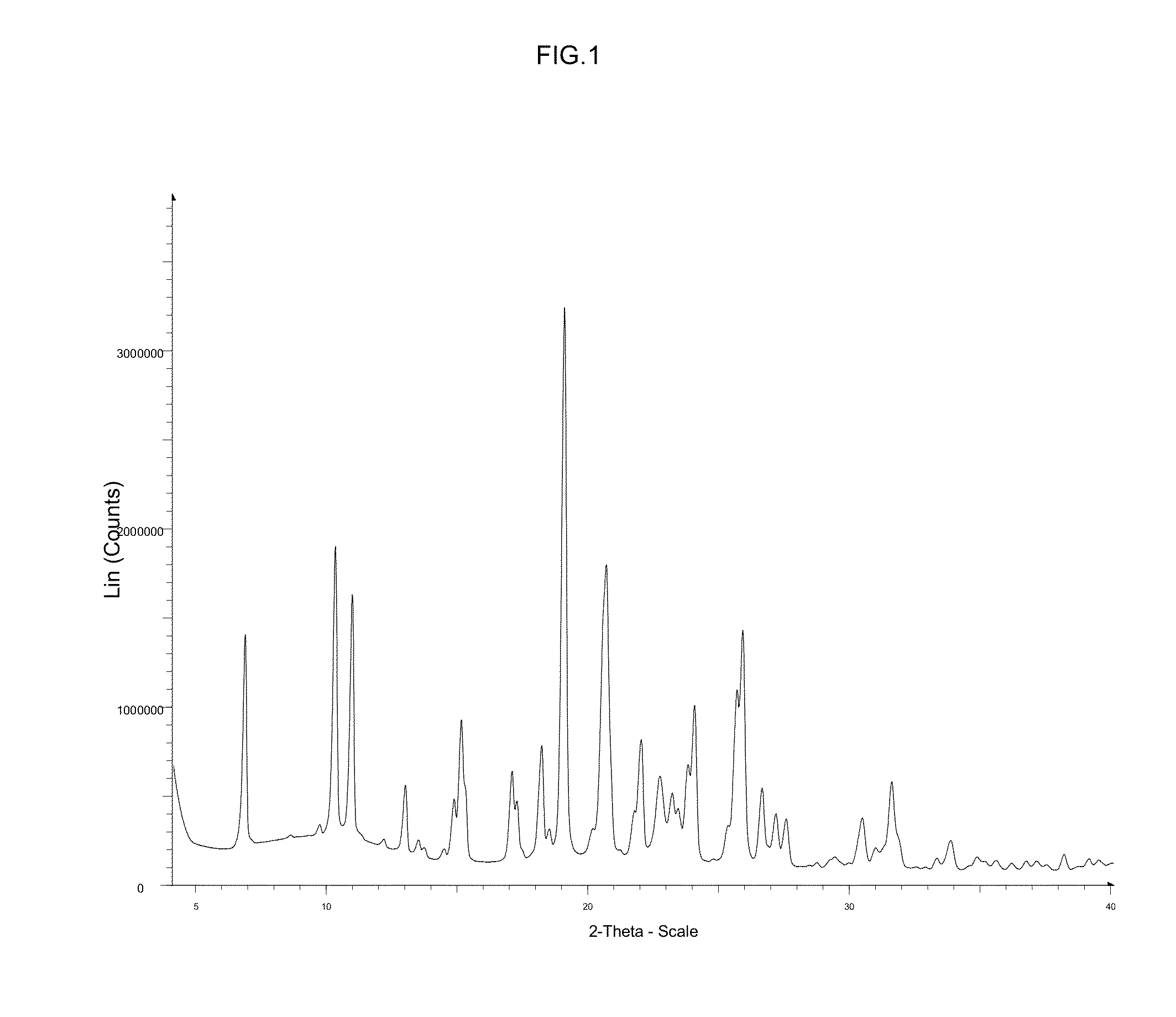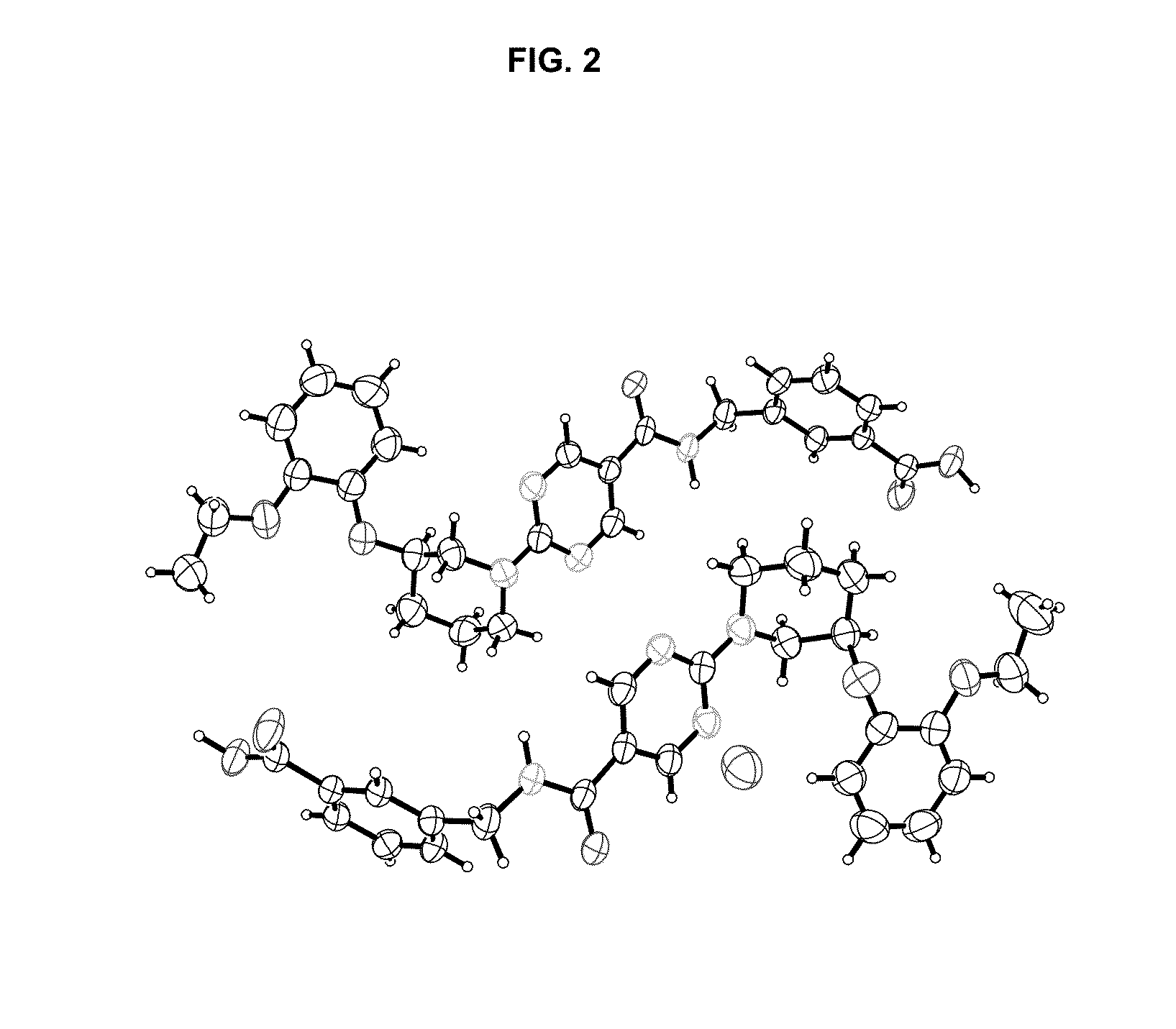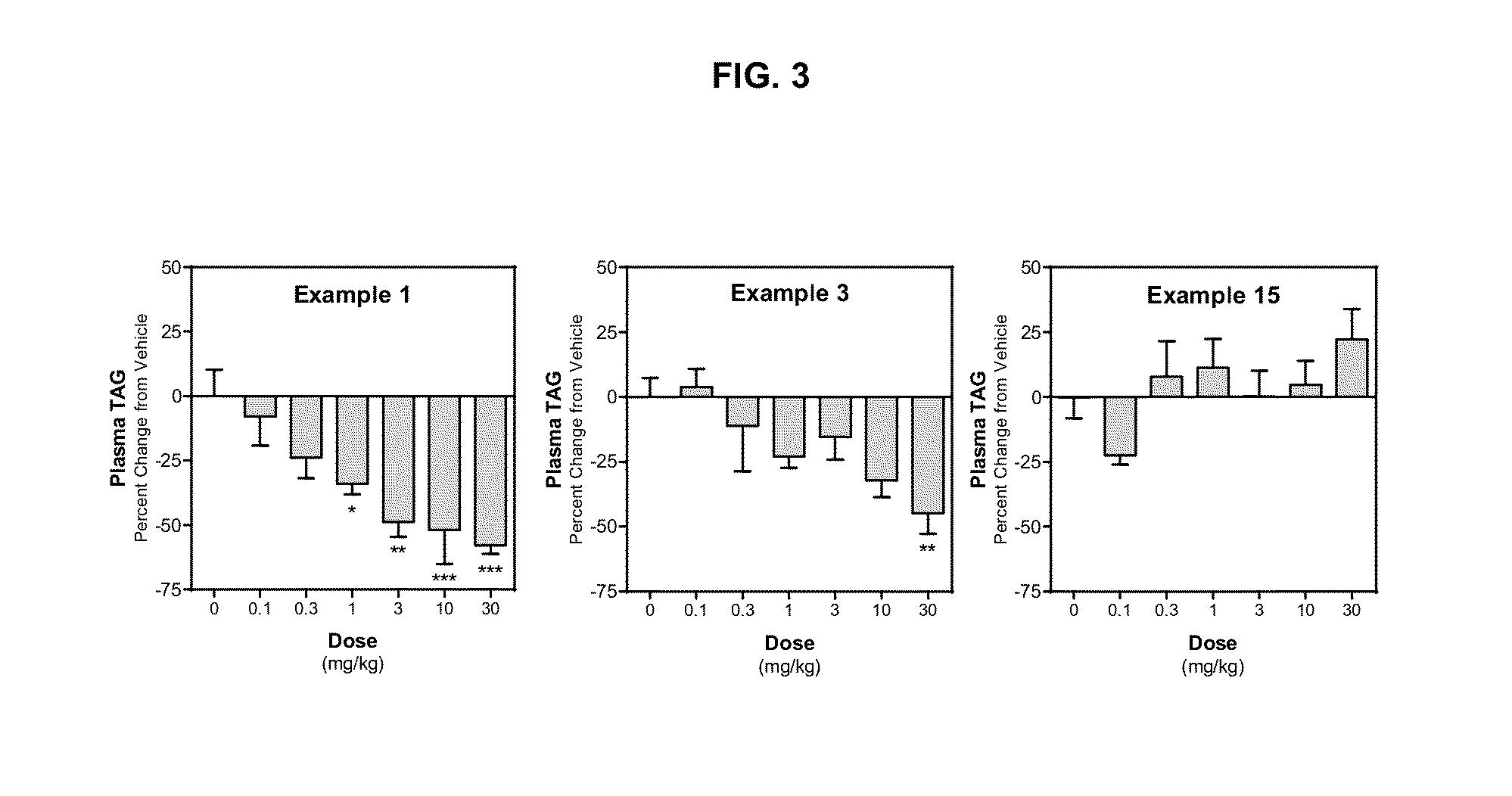Diacylglycerol acyltransferase 2 inhibitors
a technology of diacylglycerol and acyltransferase, which is applied in the direction of drug composition, peptide, metabolic disorder, etc., can solve the problems of severe lipemia, defective intraunterine growth, and inappropriate nefa flux of adipocytes
- Summary
- Abstract
- Description
- Claims
- Application Information
AI Technical Summary
Benefits of technology
Problems solved by technology
Method used
Image
Examples
example 1
Alternate Procedure. (R)-3-((2-(3-(2-ethoxyphenoxy)piperidin-1-yl)pyrimidine-5-carboxamido)methyl)benzoic acid
[0257]
[0258]N,N-Diisopropylethylamine (2.32 kg, 17.9 mol) was added via dropping funnel to a mixture of (R)-2-(3-(2-ethoxyphenoxy)piperidin-1-yl)pyrimidine-5-carboxylic acid (2.05 kg, 5.98 mol) and tetrahydrofuran (19.5 L) at 20-25° C. 1,1′-Carbonyldiimidazole (0.94 kg, 5.8 mol) was then added portion-wise, rinsing with tetrahydrofuran (1.03 L), and the mixture was heated to 43-48° C. to dissolve the solids. Methyl 3-(aminomethyl)benzoate hydrochloride (1.39 kg, 6.88 mol) was added, and the reaction mixture was heated to 58-62° C. and was held at that temperature for 3 hours, before being cooled to 20° C. The product mixture was partitioned between aqueous 3M hydrochloric acid solution (8.6 L) and 2-methyltetrahydrofuran (30.8 L). The organic layer was washed sequentially with aqueous 1M hydrochloric acid solution (8.6 L), aqueous 15% ammonium hydroxide solution (2 times wit...
example 1a
[11C]-(R)-3-((2-(3-(2-ethoxyphenoxy)piperidin-1-yl)pyrimidine-5-carboxamido)methyl)benzoic acid
[0266]
Step 1. (R)-2-(3-(2-ethoxyphenoxy)piperidin-1-yl)-N-(3-iodobenzyl)pyrimidine-5-carboxamide
[0267]A mixture of (R)-2-(3-(2-ethoxyphenoxy)piperidin-1-yl)pyrimidine-5-carboxylic acid (2.00 g, 5.82 mmol), (3-iodophenyl)methanamine (1.00 mL, 7.20 mmol), N-methyl morpholine (2.00 mL, 18 mmol), EDCl (1.2 g, 5.9 mmol), and HOBT (455 mg, 2.91 mmol) in THF (30 mL) was stirred at room temperature overnight. The reaction was diluted with EtOAc (50 mL). The organic layer was washed with saturated aqueous solution of NH4Cl (50 mL), saturated aqueous solution of NaHCO3 (50 mL), and brine (50 mL), dried over Na2SO4 and concentrated to dryness. The residue was purified by flash column chromatography (0-50% EtOAc in Heptanes) to afford (R)-2-(3-(2-ethoxyphenoxy)piperidin-1-yl)-N-(3-iodobenzyl)pyrimidine-5-carboxamide (2.39 g, 74%) as a solid. 1H NMR (400 MHz, CDCl3) δ 8.69 (s, 2H), 7.69 (m, 1H), 7.64 (...
example 2
(R)-3-((2-(3-(2-ethoxyphenoxy)piperidin-1-yl)pyrimidine-5-carboxamido)methyl)-5-methoxybenzoic acid
[0271]
Step 1. Methyl (R)-3-((2-(3-(2-ethoxyphenoxy)piperidin-1-yl)pyrimidine-5-carboxamido)methyl)-5-methoxybenzoate
[0272]The preparation of methyl (R)-3-((2-(3-(2-ethoxyphenoxy)piperidin-1-yl)pyrimidine-5-carboxamido)methyl)-5-methoxybenzoate serves as a representative procedure referred to as Amidation Method 1 (HATU).
[0273]To a suspension of (R)-2-(3-(2-ethoxyphenoxy)piperidin-1-yl)pyrimidine-5-carboxylic acid (50 mg, 0.14 mmol) and HATU (63 mg, 0.17 mmol) in dry dichloromethane (3 mL) was added N,N-diisopropylethylamine (0.075 mL, 0.42 mmol) at 20-25° C. The mixture was stirred for 10 min, then methyl 3-(aminomethyl)-5-methoxybenzoate hydrochloride was added (33 mg, 0.14 mmol) at 20-25° C. The reaction mixture was stirred at 20-25° C. for 1 hour. The mixture was concentrated under reduced pressure and the resulting residue was dissolved in ethyl acetate (10 mL), washed with water (...
PUM
| Property | Measurement | Unit |
|---|---|---|
| temperature | aaaaa | aaaaa |
| temperature | aaaaa | aaaaa |
| temperature | aaaaa | aaaaa |
Abstract
Description
Claims
Application Information
 Login to View More
Login to View More - R&D
- Intellectual Property
- Life Sciences
- Materials
- Tech Scout
- Unparalleled Data Quality
- Higher Quality Content
- 60% Fewer Hallucinations
Browse by: Latest US Patents, China's latest patents, Technical Efficacy Thesaurus, Application Domain, Technology Topic, Popular Technical Reports.
© 2025 PatSnap. All rights reserved.Legal|Privacy policy|Modern Slavery Act Transparency Statement|Sitemap|About US| Contact US: help@patsnap.com



